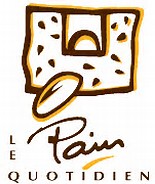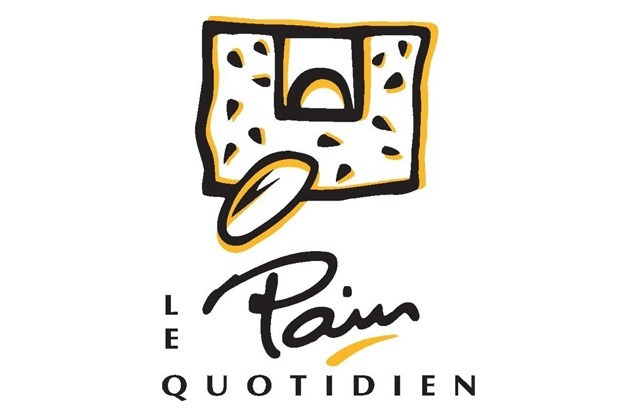Information
-
Restaurant Name & Number
-
Conducted on
-
Managers On Duty
-
Prepared by
Dining Room / Patio Area
-
1. Dining room clean, free of debris? Menus clean, intact, and not torn?<br>2. Table set to LPQ spec (Sugars, S&P bottles, Jams, Oil, Balsamic); Condiments full and presentable.<br>3. Expo Clean and organized; Sightline to kitchen and expo presentable and not cluttered.<br>4. Sanitizer solution in place, towel submerged in solution, solution reads 200ppm.<br>5. Pre-cut Bread not present at Expo dining room side of window<br>6. Silverware polished, containers holding silverware clean and free of debris.<br>7. Chalkboards updated and present current featured specials, core menu offerings, and beverages.<br>8. No evidence of pest in dinging room.<br>
-
Optional picture to communicate corrective actions needed.
-
Notes:
-
Date and Time when corrective actions will be completed.
Bathrooms
-
1. Bathrooms clean, evidence of routine cleaning checklist in place and followed every 1.5 hours.<br>2. Hot water present and available.<br>3. Hand-washing soap dispensers filled, paper towels stocked, toilet paper stocked, and baby changer table clean.
-
Optional picture to communicate corrective actions needed.
-
Notes:
-
Date and Time when corrective actions will be completed.
Retail / Service
-
1. Breads, Ambient Pastries, Tags, and Quantities ordered (AM/PM) all meet LPQ retail specifications and business needs. <br>2. Cold Pasties displayed according to LPQ specifications. Quantities meet business need, tags straight, present, and clean. Glass clean and free of streaks.<br>3. Retail products are clean, rotated using FIFO, visual displays set to LPQ specifications. All retail products are present and available.<br>4. Retail Boards/Merchandising Schematics in place, current, and updated with current product offerings and prices.
-
Picture of Cold Pastry Display
-
Picture of Ambient Pastry Display, Retail Display, and Bread Display
-
Notes:
-
Date and Time of Day of Displays
Retail Cleanliness / Food Safety
-
1. Sanitizer Buckets in place, solution reading is 200 ppm, towel present in solution and submerged.<br>2. All tools clean and present (whisk, tongs, steam pitches), cutting boards clean and free of divots and stains.<br>3. Equipment working, clean, and maintained properly; ice bin (if available) exterior clean and interior clean; no dust or mold present; ice is full.<br>4. Retail area floors clean and free of debris; boxes/crates 6” above the ground; ALL units are pulled out to clean under and hard to reach places.<br>5. Personal belongings not stored or present in retail area; staff in proper uniform<br>6. Hand washing evident and practiced throughout the shift.<br>7. All cold products stored at 38* and FIFO, no expired products present or being served. <br>8. Staff properly trained on new beverage specials, core menu beverages, new specials, and core menu offerings.<br>9. No evidence of pest.
-
Pictures of Areas in need of corrective actions
-
Notes:
-
Date and Time when corrective actions will be completed
Grab & Go Unit
-
1. Products displayed are set to master list offerings available per region.<br>2. Products displayed are FIFO and fresh.<br>3. G&G case is not empty and well stocked for business need.<br>4. Unit maintained, cleaned, and maintains the required temp 38*.
-
Optional Pictures to communicate corrective actions needed.
-
Notes:
-
Date and Time when corrective actions will be completed.
Coffee / Beverages
-
Beverage Batches prepared to specification (Check batch teas, cold brew, and lemonade)
-
Cold Beverages ordered are prepared to specification (check carafe service, cold brew pour, and ice coffee service)
-
Hot Beverages ordered are prepared to specification (check a drip coffee and espresso beverages)
-
Espresso Extraction Time correctly calibrated to 16-25 seconds
-
Espresso Liquid Volume, Grind, Taste, and Temp calibrated to specification of unit
-
Timers for Drip Coffee Service in place and being used to ensure coffee is and quality is held to the highest standard
-
Espresso Machines Clean and Maintained (steam wand clean, drain table clean, exterior unit clean, and sanitizer solution specific for the steam wand present)
-
Coffee Drip Machines Clean and Maintained (spiket clean, spray head clean, temp current 165-175, and exterior around unit clean)
-
No pre portioning of drip coffee grounds present or in practice
Kitchen Safety
-
All cold products are stored at the proper cold temp of 38F. Ensure to check line cold units, walk in units, and coolers
-
All required permits up to date and available in a folder in the office for inspection (this is the DOH kit, current standing with DOH, test strips, previous temp logs, All Manager Servsafe Certifications on file, Food Handler Cards current and not expired)
-
Sanitizer Buckets present and changed every 1.5 hours. Current solution at 200ppm. Test strips available and accessible
-
Hand Washing evident and in practice, hand washing stations stocked with soap, paper towels, and hot running water.
-
ALL kitchen staff in uniform according to LPQ specifications. Uniforms clean, presentable, and hats currently worn; All personal belongings stored in lockers and away from all food areas
-
Allergen Guideline in place and posted within the kitchen. Staff aware and trained on procedures
Kitchen Sanitation
-
Cutting Boards clean and no divots present
-
Garbage Cans clean on the interior and exterior; dust pans clean and free of debris
-
ALL deliveries stores and kept 6" above the ground
-
ALL smallwares clean; kitchen tools clean and free of stains and food debris; bins kept clean with no debris or standing water
-
Cleaning supplies stored and kept in a specific designated area. No chemicals stored near food preparation areas or on hand washing stations; MSDS book current and kept in kitchen or in office for review
-
No evidence of pest
Kitchen Equipment
-
Kitchen equipment clean, maintained properly, no presence of torn gaskets on cold units; interior/exterior of all units show signs of routine cleaning
-
Shelving clean, organized, and no visible presence of dust or mold (check in cold units as well for any signs of dust and mold)
-
Mop Sink Area (if applicable) Mops hung to dry, basins clean, designated mops used or each area of the restaurant (bathroom, kitchen, dining room)
-
Dishwasher working and cleaned regularly. Test strips available and in place, staff understands the difference of a high temp and low temp dish machine; chemicals connected are calibrated and stocked for optimal performance
-
Overall kitchen is clean, organized and presence of cleaning checklist in place
-
Pictures to communicate corrective actions needed
-
Date and Time when corrective actions need to be completed
Kitchen COGS
-
iPad present in kitchen and in use for recipe referencing
-
Kitchen daily books available and used (waste filled out, temp logs current, and prep sheets utilized showing pars in place)
-
All order sheet current and in place. Pars set and templates filled out daily
-
Prep products are prepared according to LPQ specifications (check protein portions on salmon, chicken, turkey, ham, and zoe bacon)
-
FIFO is evident and in place. No expired product present and being served
-
Check quality on key batch recipes for accuracy (quinoa taboule, lentil batch, avocado mash, shaved vegetables, slice radish, and slice cucumbers)
-
ALL team members in the kitchen are trained correctly on core menu items and on seasonal specials (verbally quiz and spot check team members on execution of our recipes)
Team Member Break Areas
-
Designated areas for employees are kept clean; organized; not food or beverage products left. Area must be kept clean. No food or beverage products can be present of employees are not on break







